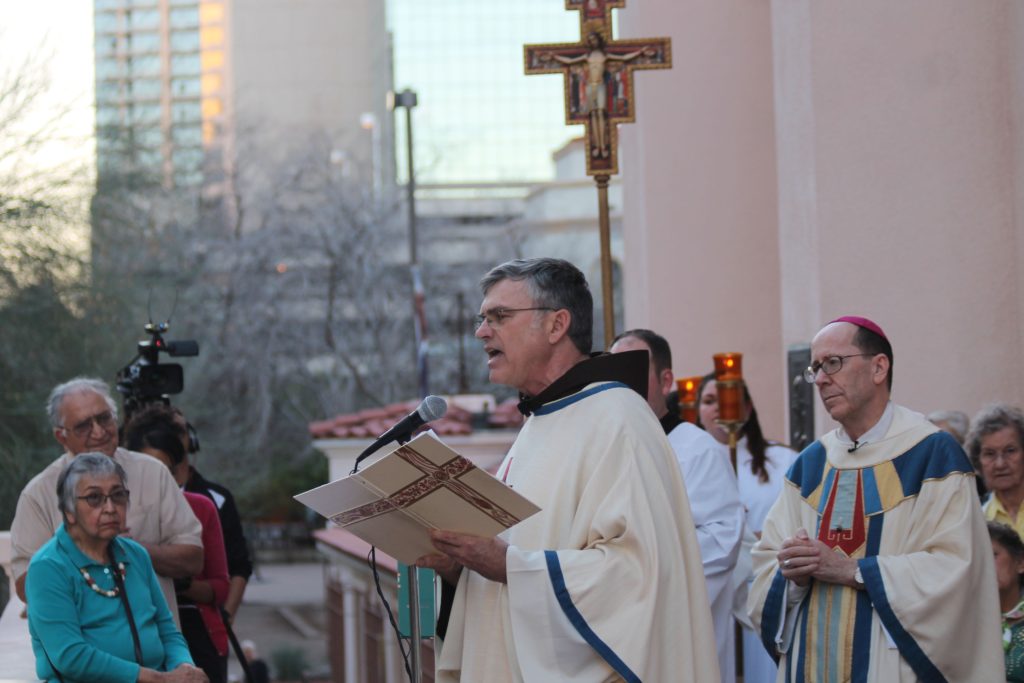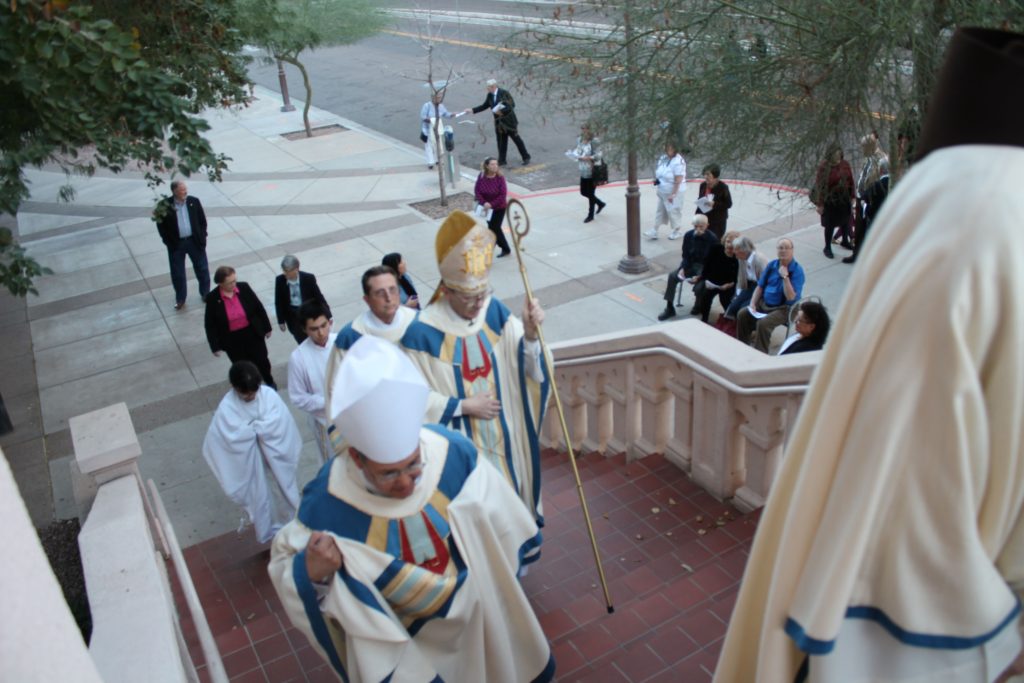
[dropcap type=”4″]M[/dropcap]arking the 100-year anniversary of the dedication of St. Mary’s Basilica, the faithful gathered for a colorful celebration Feb. 11.
Throughout 2014, the basilica had honored 100 years of faith in the desert Southwest with a series of events that highlighted the diverse cultures that comprise the community.
The Mass, the culmination of centenary events over the previous months, began with a procession.
Franciscan Friars, clergy from around the Diocese of Phoenix, and Bishop Thomas J. Olmsted and Auxiliary Bishop Eduardo A. Nevares formed a long line that stretched from the nearby Diocesan Pastoral Center to the steps of the basilica, passing between Knights of Columbus in full regalia. The crowd sang “All Are Welcome” as the procession threaded its way up the stone stairs.
Phoenix Police closed off traffic so the crowd could listen as Fr. Michael Weldon, OFM, rector of the basilica, made his opening remarks. He began by acknowledging the segregation that was once practiced at the church.
“Our doors were opened to some and closed to others,” Fr. Weldon said. “We want to begin this sacred rite by acknowledging both.”


He also asked forgiveness of the Spanish-speaking and Mexican community of Phoenix. “We proclaim that from this day forward, all will be welcomed and acknowledged here,” Fr. Weldon said.
Bishop Olmsted sprinkled the doors of the basilica with holy water and then passed among the crowd that stood in the street below.
The Mass that followed the opening procession was a ringing testimony to the commitment to warmly welcome every culture. Readings from Scripture and hymns were in English and Spanish and the intercessory prayers featured an array of languages. Representatives of the Tongan, Native American, Filipino and Nigerian read prayers in their native tongues as the congregation followed along in English in the program.
In his homily, Fr. Weldon spoke movingly of the history of the basilica, built upon the sacrifices of countless religious men and women as well as laity. He also spoke at length about the German friar, Fr. Novatus Benzing, who founded the parish.
“He had great ambition,” Fr. Weldon said. “In his writings, he seemed to want St. Mary’s as the cultural center of the burgeoning Phoenix society.” The decision to segregate the community was borne not of racism, Fr. Weldon said, but rather of a desire to avoid creating a “powerless church, a Mexican national church…instead of a cultural and religious center of growing the Arizona economy and politic.”
Camela Fishgold, chair of the centennial committee, was overcome by emotion as she expressed gratitude at the end of the Mass for a year’s worth of centennial events.
“It’s been a year of education, reconciliation and honoring our patroness the Blessed Virgin Mary,” Fishgold said. “Outside these walls, St. Mary’s has seen buildings go down and buildings come up; streets go from dirt roads with horses and buggies to paved streets and cars. She had seen an entire city built up all around her.”
The Mass, concelebrated by the Franciscan Friars, Bishop Olmsted, Bishop Nevares and numerous other priests, preceded a multi-cultural feast in the church hall that featured food and entertainment from around the globe.
Dedicated on Feb. 11, 1915, and staffed by the Franciscans, St. Mary’s Basilica is the oldest Catholic church in Phoenix.






